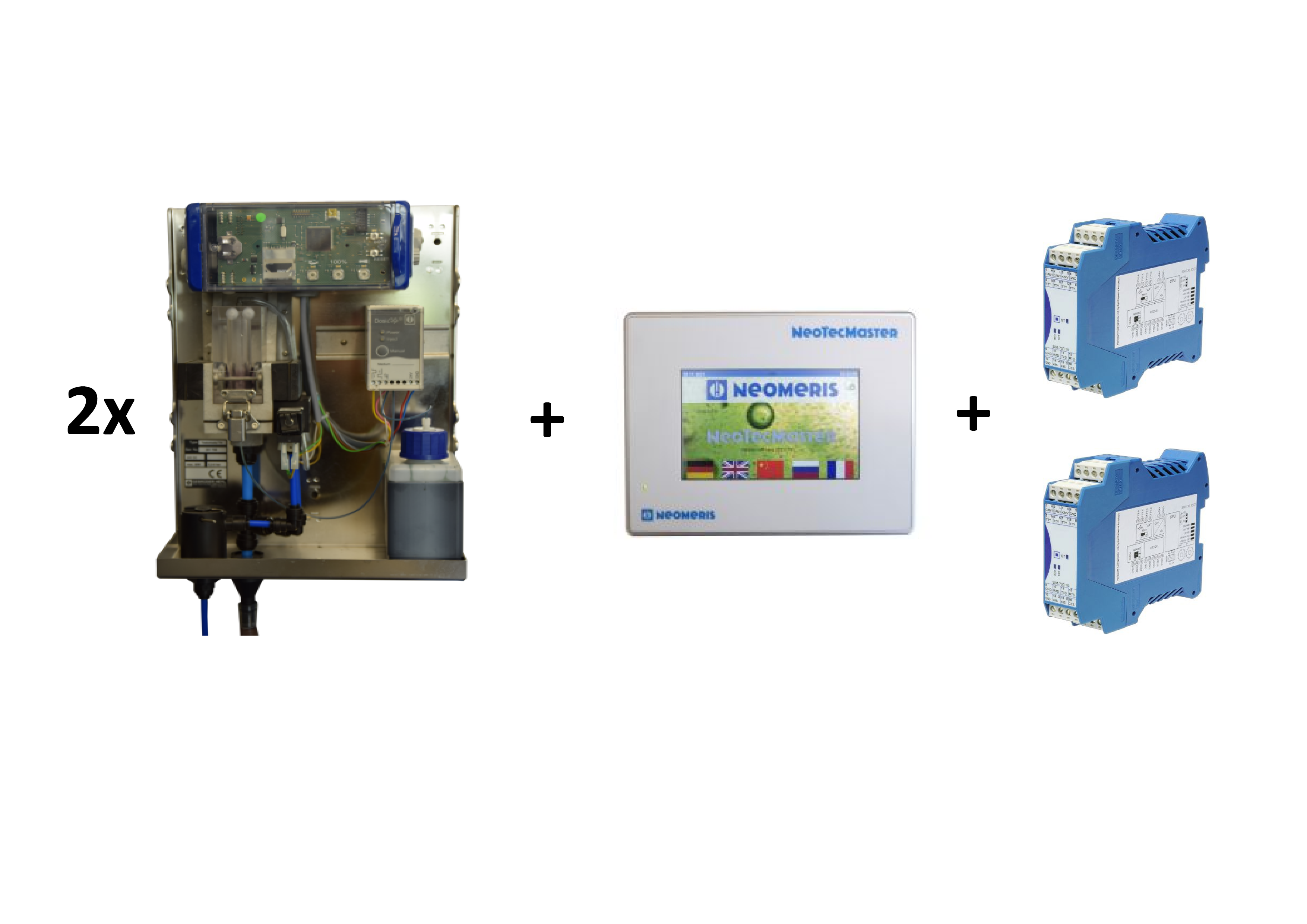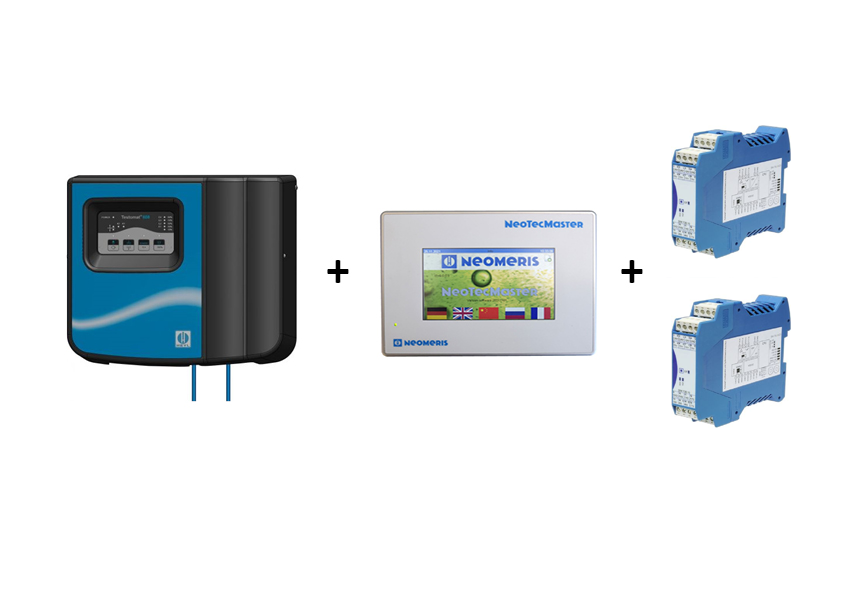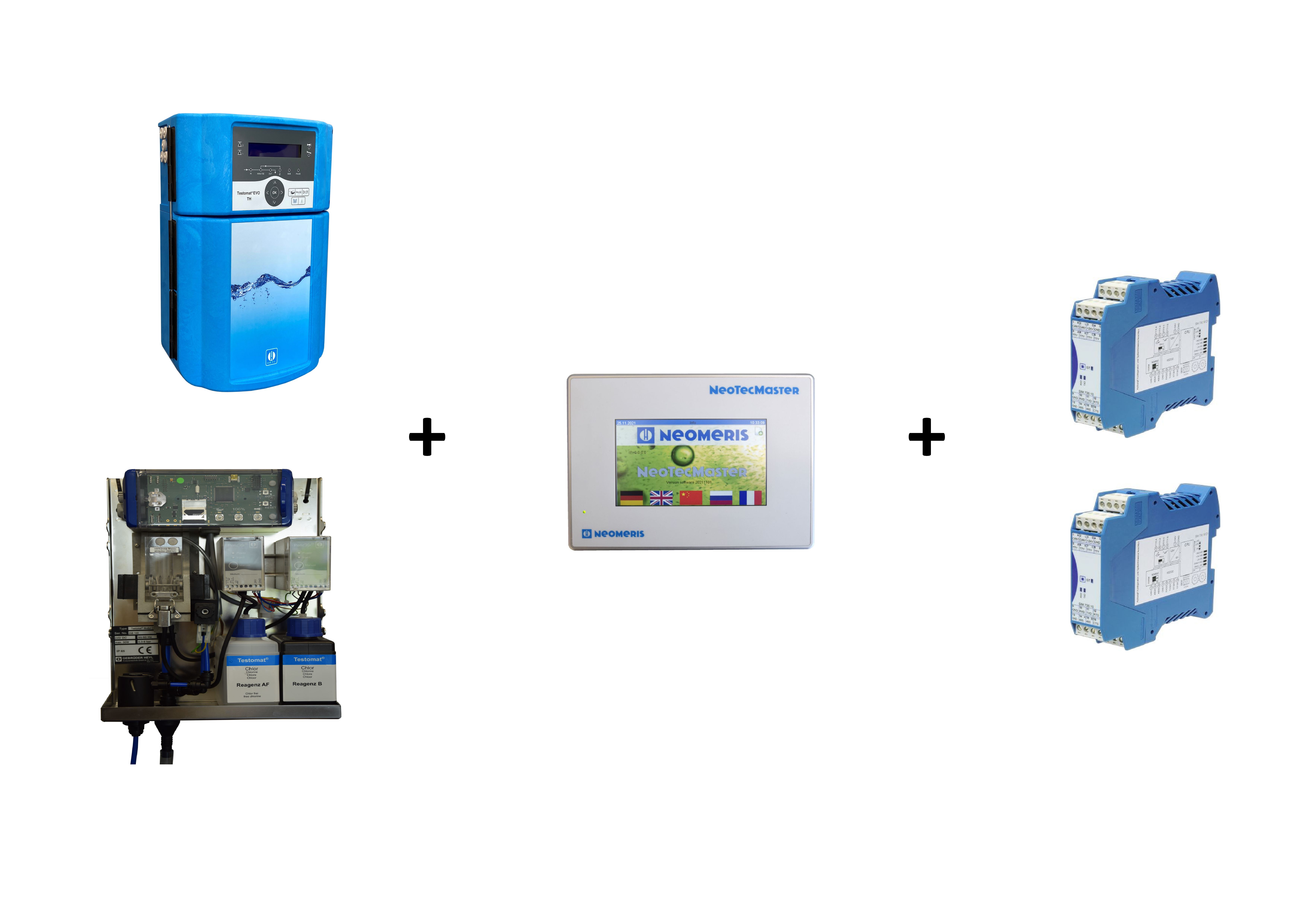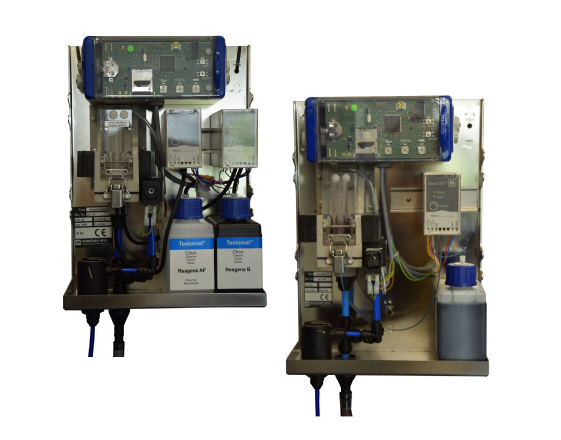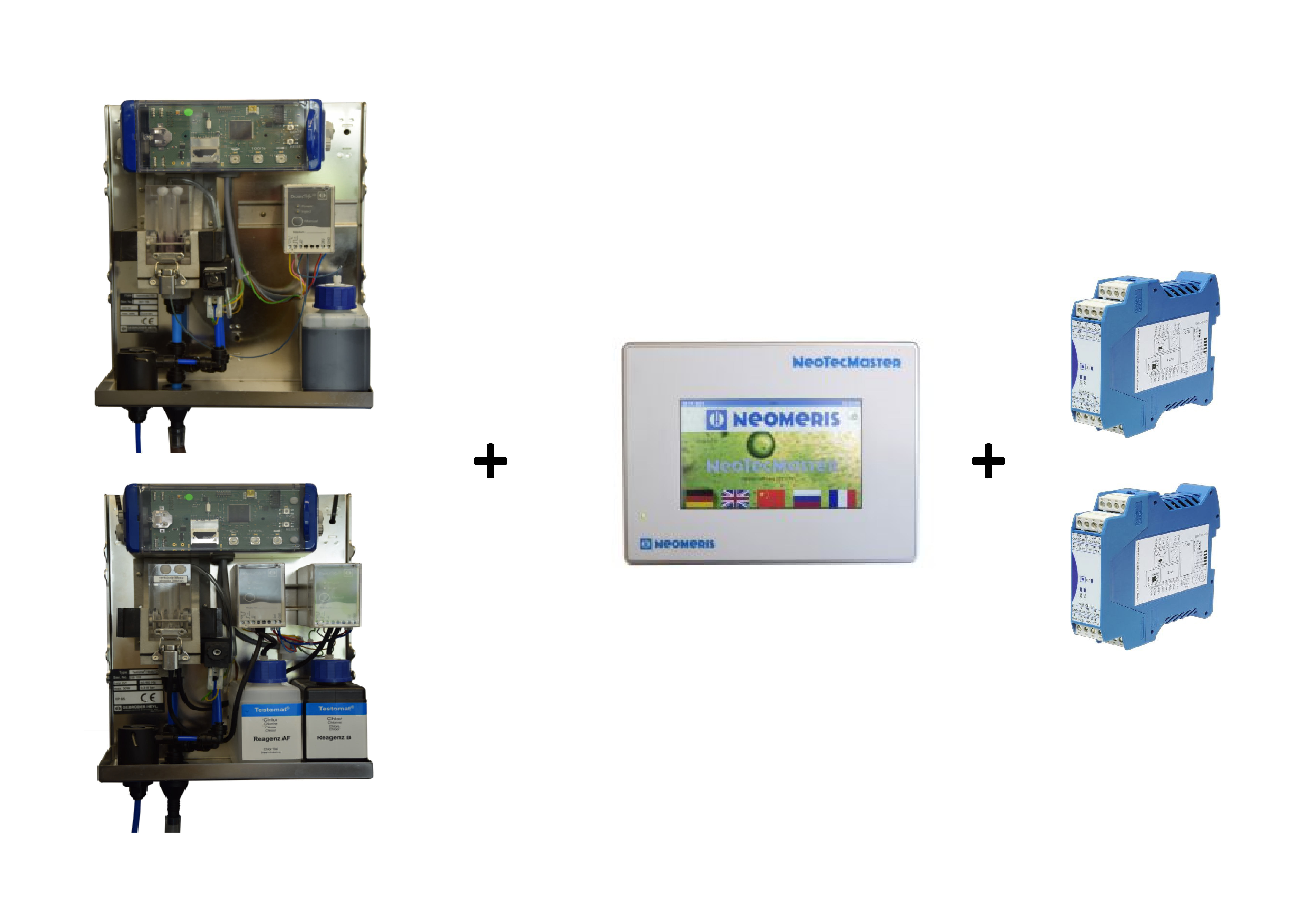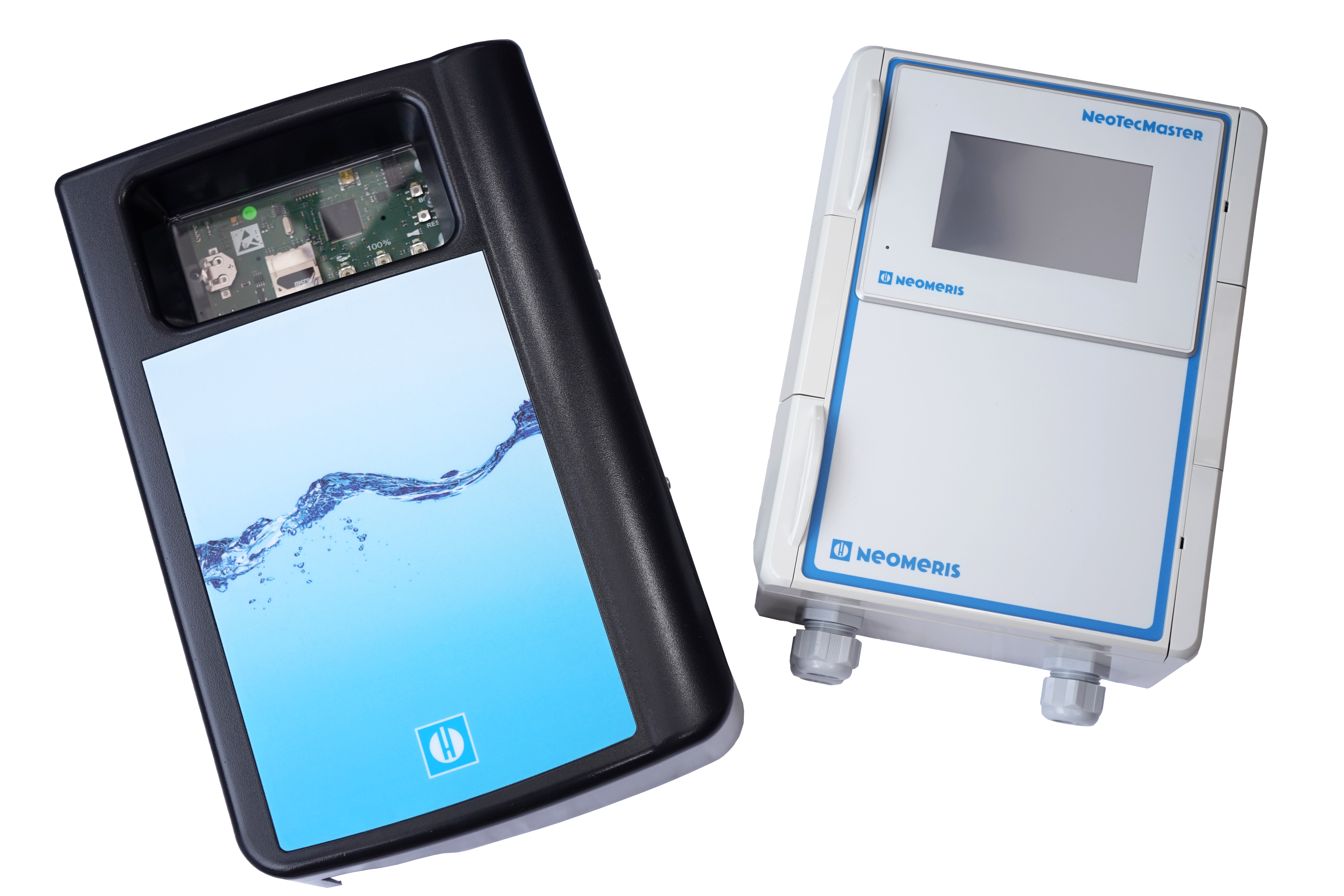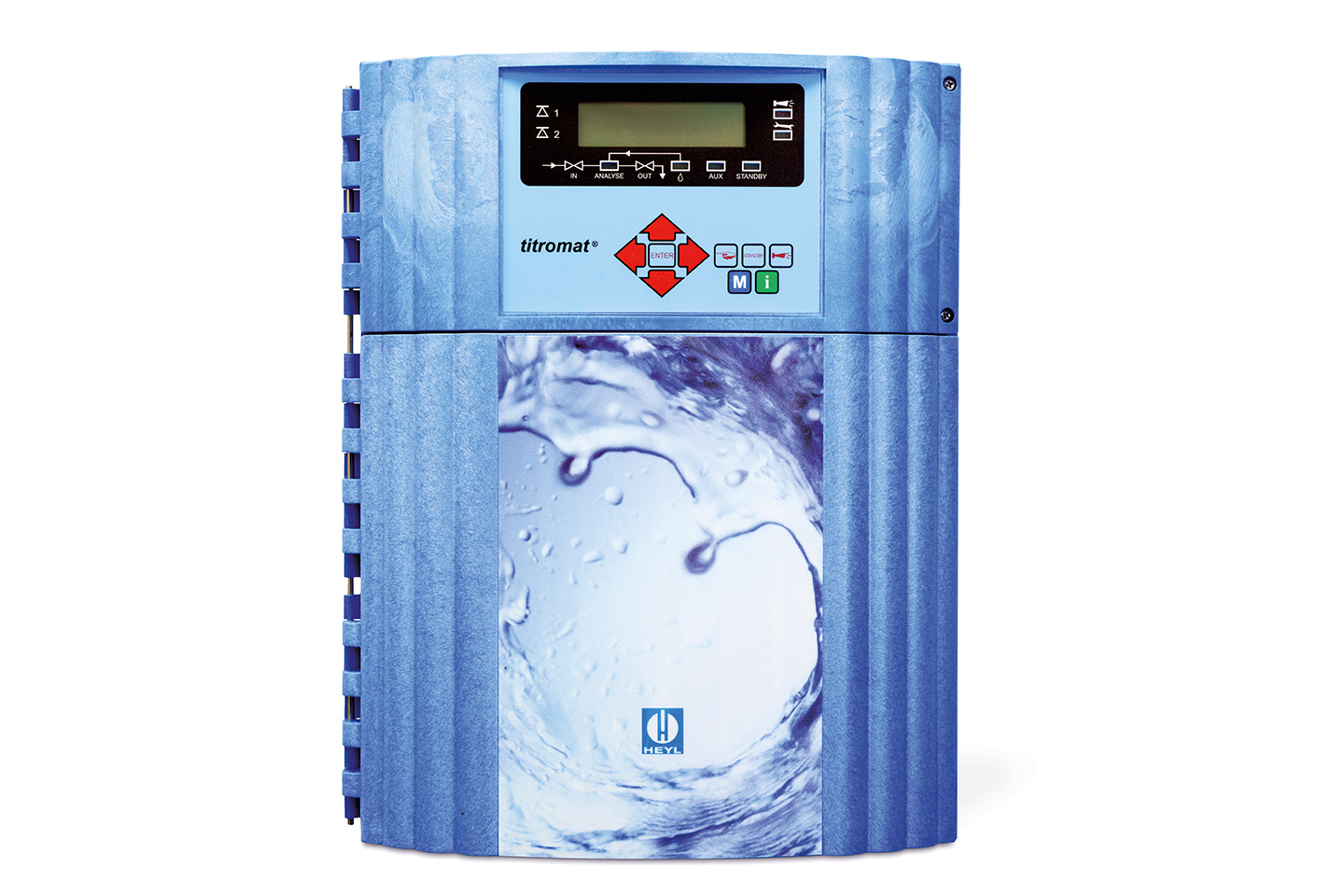Total hardness is defined as the sum of all alkaline earth ions; these are mainly calcium and magnesium. In solution, these are "paired" with chlorides, sulfates, carbonates and other anions.
The best-known and most accurate determination method for total hardness is complexometric titration with an aqueous solution of the disodium salt of ethylenediaminetetraacetic acid (EDTA, trade name: Titriplex III) at a known concentration. EDTA forms soluble, stable chelate complexes with the hardness components Ca2+ and Mg2+. To the water sample to be analyzed, 25% ammonia solution, a pH 11 buffer (ammonia-ammonium acetate) and the indicator Eriochrome Black-T are added.
The indicator forms a red colored complex with the Ca2+ and Mg2+. If these ions are bound by the EDTA at the end of the titration, the Eriochromschwarz-T is present freely and is colored green. The total hardness is calculated from the consumed ml of EDTA solution. This allows a highly accurate ACTUAL value analysis.
-
Water Analyzers
- Devices
-
Parameters
- Water hardness (Ca2+ and Mg2+)
-
Total hardness (TH)
- Carbonate hardness (KH)
- Acid capacity (pH 4.3, KS 4.3) and p-value (pH 8.2, KS 8.2)
- Base capacity (KB82)
- Bromine (Br)
- Free Chlorine (HOCl)
- Total chlorine (CC)
- Chlorine dioxide (ClO2)
- Chromate & Chromium Cr(VI)
- Iron (II + III dissolved - Fe3O4)
- Silicate (SiO2 - dissolved)
- Ortho-Phosphat (P2O5)
- Polymere & Polyacrylate
- Monochloramine (NH2CL)
- TESTOMAT® - Accessories
- Spare Parts
- Service sets and maintenance cases
- Liquid chemistry
- Controls
- Electrodes and sensors
- Hand-held measuring instruments and analysis cases
- NeoTec World
- Clinical Solutions
- Blog
- Seminars & Webinars
- Ozone and UV technology
- Dosing pumps
- Gas Measuring Instruments
- Hygiene and Disinfection
- Water Meters
- Accessories
Filter products




